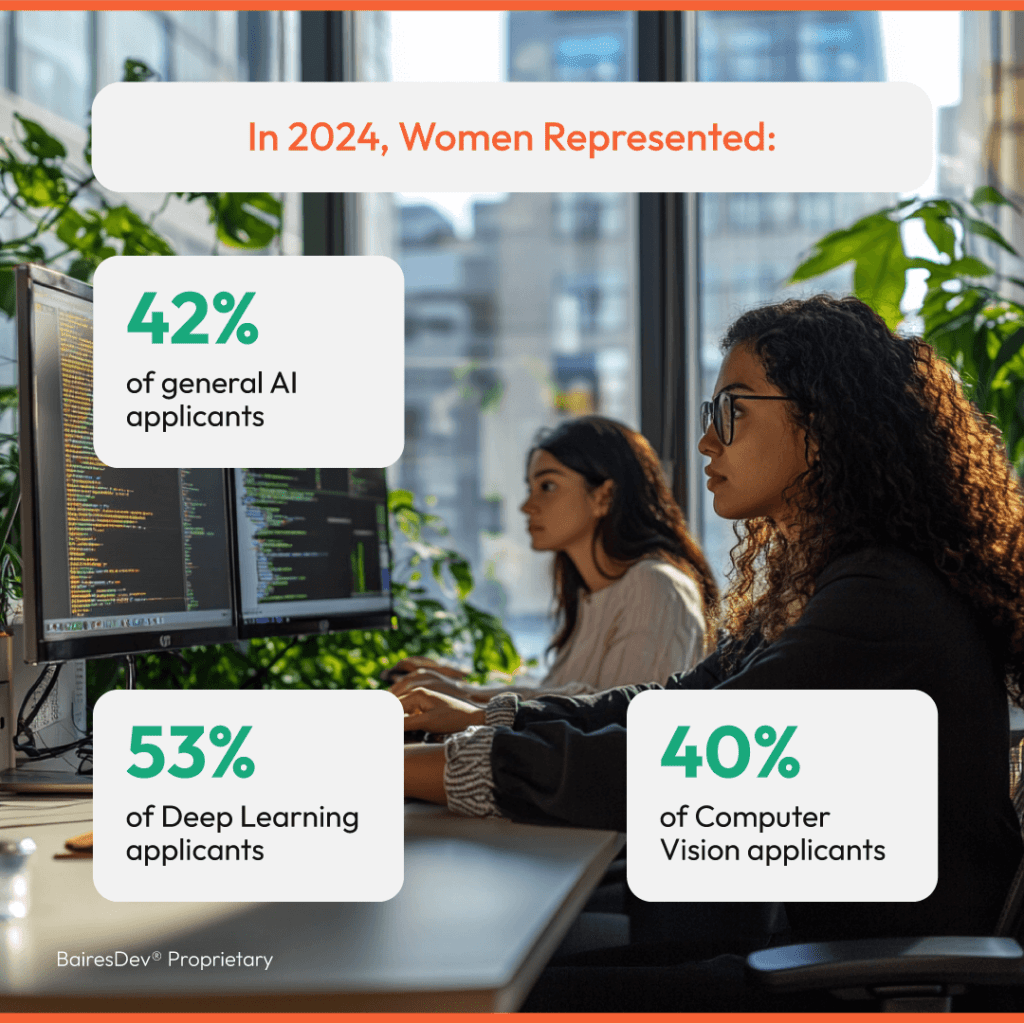In a tech industry still striving for gender parity, our company’s applicant data tells an encouraging story. In 2023, women represented 51% of our applicants, and this trend continues in 2024, with women once again comprising 51% of all new applicants.
The evolution of broader industry numbers tells a story of slow advancement. In 2022, women held just 24% of positions in computer occupations. In 2023, that number increased to 27%. By the end of 2023, women held 35% of tech jobs in the U.S. workforce.
The sustained trend of women applying for tech roles reflects evolving workplace cultures and shifting industry dynamics. Although the industry still has a long way to go—Women in Tech Network reports it could take 131 years to achieve economic parity—these numbers reflect progress and growing opportunities for women entering the field.
The Rise of Women in AI
Since 2020, the number of women applying to technical roles on our platform has increased by 74%. We’re talking about software developers, UX/UI designers, QA engineers, and project managers, to name a few. However, AI specializations have seen notable growth. Female applicants with AI skills have increased by 166% since 2020, with notable growth in specialized areas.

Source: BairesDev
Where do these numbers stand in the broader industry context? A 2024 report indicates women comprise only 22% of AI talent globally, with representation dropping to less than 14% at senior executive levels. Additionally, Time Magazine reports that women account for only 18% of AI researchers globally. Against this backdrop, our 2024 applicant pool shows promising signs of change.

Source: BairesDev
These numbers suggest a potential transformation in a field that will shape the future of technology and society.
New Tech Hubs for Female Tech Talent
The Latin American tech ecosystem is playing a significant role in advancing women’s presence in tech. Over the last five years, the number of female applicants from this region has increased by 25%. Brazil has seen one of the most significant increases in female applicants, with a 180% growth from 2020 to 2024.
The Caribbean has notably contributed to our applicant pool, which has grown by 484% since 2020. Within this region, Jamaica and Trinidad & Tobago stand out for significantly multiplying the number of women applicants during the same period.

This trend aligns with the rise of nearshoring and remote work, which have expanded access to high-skill tech jobs. As a result, more female tech talent can participate in the global tech economy regardless of location. Our technology-driven talent acquisition process prioritizes skills over backgrounds, reducing bias and identifying top talent anywhere.
Where Do We Go From Here?
The rise in women applicants for tech and AI roles signals a changing industry. While challenges remain, the growing participation of women, especially in specialized fields, reflects a broader shift in access and opportunity. As nearshoring and remote work expand, more talent is entering the global tech workforce, shaping the future of AI and beyond.






